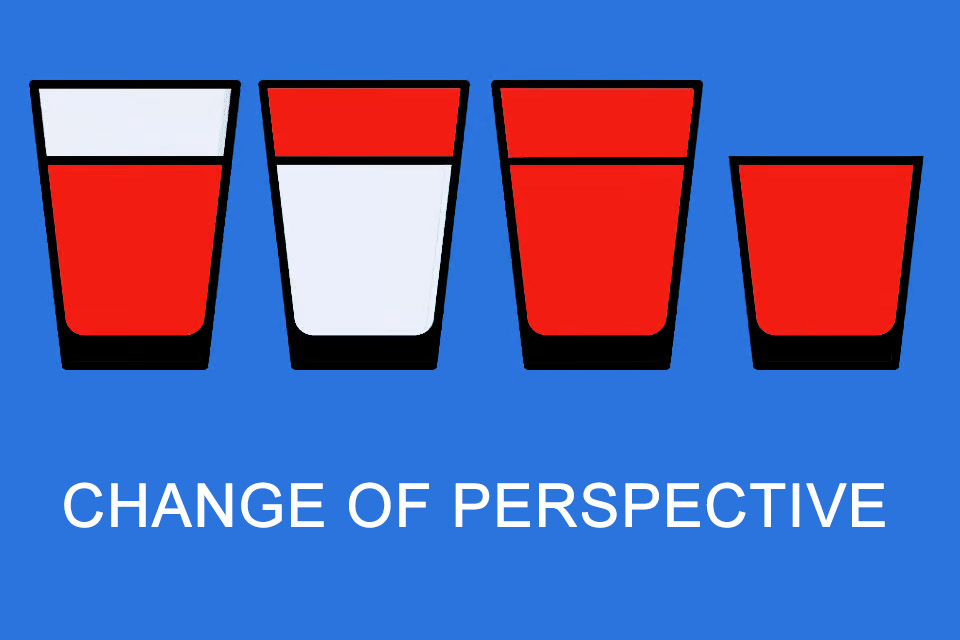What is Change of Perspective?
Smartpedia: A change of perspective describes the ability to adopt, accept and use other views on issues and challenges in addition to one’s own.
Change of perspective – the conscious view from another direction
“You can never solve problems with the same mindset that created them,” Albert Einstein is reputed to have said.
“I have not failed. I have just found 10,000 ways that do not produce the desired result,” is a famous quote by Thomas Edison.
“Some people reject a good idea merely because it is not theirs” is an insight by Luis Brunel.
Three quotes that fit well with the theme of changing perspectives. It is easily and frequently demanded, but not quite so easily and frequently achieved. People have a hard time with other perspectives, new ways of looking at things, changed views or changes of standpoint. They are stuck in
- selective perceptions and self-images,
- certainties and experiences,
- rules and processes,
- clichés and cultural imprints,
- unconscious bias and overconfidence,
- competition, interpretive sovereignty and hierarchies.
Obviously, a change of perspective is an ability to adopt, accept and use other views of issues and challenges in addition to one’s own.¹ The following are considered prerequisites
- an openness to the opinions of others,
- a genuine interest in the other person, and
- a rejection of right and wrong, of good and evil.
Yes, those who focus their gaze on individuals and personal situations are likely to encounter the challenges and prerequisites for a change of perspective on a regular basis.
An example of perspective change
Let’s take a look at a simple example – a glass half-filled with water – and possible perspectives on this object. For
- an optimist, the glass is half full.
- a pessimist, the glass is half empty.
- a realist the glass is full, half filled with water and half filled with air.
- an engineer the glass is twice as big as it should be.
- …
This example can easily be extended with the perspectives of idealists, opportunists, capitalists or communists. But even without expansion, three important aspects can be recognised:
- In terms of content, the example describes different perspectives on an object (a glass filled with a quantity of water). It is not about a situation (how did the water get into the glass?) and not about motivation (why was water put into the glass?). Nor is it about a decision to be made (should more water be put into the glass?) or the people acting (who put the water into the glass?). There are already different views and points of view when looking at objects; it is therefore obvious that there are differences in many other occurrences as well.
- People look at objects and situations from perspectives to which they have become accustomed. The optimist sees things positively, the pessimist negatively. Adopting an individually different view often causes effort and expense.
- People associate qualities with people. “Naturally” the optimist sees a glass half full and the pessimist a glass half empty. Anything else would be a surprise to outsiders. The fact that people possess more than one characteristic makes the example (and the interaction) a lot more complicated (and also more interesting).
Last but not least, the example is a good demonstration of the change of perspective: If the optimist accepts that the realist represents a valid position with his statement, and the pessimist nods with a smile to the engineer, because his point of view is also coherent, then the participants win through the different perceptions and points of view. And that is exactly what the topic of changing perspectives is all about: listening to the views, experiences, opinions, interpretations of others, understanding them and ideally also using them to make better decisions, identify useful ideas or solve problems.
The institutionalised change of perspective
Interestingly, organisations find it much easier than individuals to change perspectives, because there are numerous disciplines and methods that require a change of perspective:
- Design thinking is about thinking like a designer and dealing with the target audience, its needs and application scenarios.
- User stories describe the functionality of a system from the point of view of a concrete user. It is about who wants what and with what intention from a system.
- Use cases describe the behaviour of a system from the user’s point of view, including all scenarios with which an actor tries to achieve a goal.
- In reverse brainstorming or the headstand technique, a problem is deliberately alienated in order to identify causes for the alienation, which subsequently help to solve the original problem.
- Considering a candidate journey is about putting oneself in the position of applicants in order to optimally design the path from the first point of contact with the company to the completion of the application process.
- Search engine optimisation in online marketing is about user intention, i.e. understanding what intentions and interests a website visitor has in order to offer him or her the most suitable information and/or products possible.
- In business analysis, perspectives are defined in order to determine information, ascertain requirements and implement changes in companies.
- In 360-degree feedback, a person is assessed by superiors, employees, colleagues and customers or partners. Here, too, a more complete picture is created through different perspectives.
- …
This list of examples of institutionalised changes of perspective can also be easily extended.
Impulse to discuss
How do you institutionalise the change of perspective in meetings within your organisation?
[1] In some publications, the change of perspective is also referred to as a basic principle of intercultural learning.
If you like the article or would like to discuss it, please feel free to share it in your network. And if you have any comments, please do not hesitate to send us a message.
And here you will find additional information from the t2informatik Blog:



